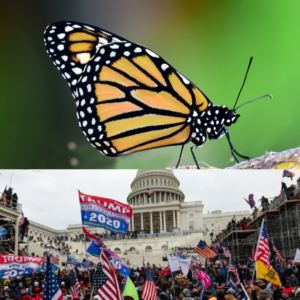Part 10 of a 10-part Series:
What Are We To Do?

What prepares men for totalitarian domination in the non-totalitarian world is the fact that loneliness, once a borderline experience usually suffered in certain marginal social conditions like old age, has become an everyday experience.”
Hannah Arendt
We might ask ourselves whether America is a pathocracy—or might have been a pathocracy on January 6th? I believe we can safely say that America has never been a full pathocracy like Nazi Germany or Stalinist Russia, but has, at various points, demonstrated elements of pathocratic tendencies. Leaving aside the sordid issue of slavery, historical examples are the forced migration of Native Americans and the internment of Japanese Americans during World War II. More recently, we had official Dept. of Justice documents supporting the torture of detainees in Guantanamo (2003) and the inhumane treatment of migrants at the U.S. border, particularly children. At the local level, I have completely lost count of the number of unarmed Black people killed by police.
As much as Americans convince themselves of their own exceptionalism, we are nonetheless subject to the same dark side of human nature as everyone else. However, we have avoided becoming a full-blown pathocracy because most of the aforementioned atrocities were eventually subject to popular backlash, investigations, and (sometimes) accountability. The January 6th coup attempt itself was prevented because there were honorable persons still occupying positions of power. Regardless of our own opinions of these individuals, the coup was unsuccessful because former Vice President Pence refused to do anything other than his duty to count the Electoral votes. Election officials in Georgia, Arizona and other states refused to submit to Trump’s threats and certified a valid election. Republican-appointed judges (some appointed by Trump himself) upheld the rule of law. If any one of these individuals had been dishonorable, we would likely not be living in the free United States of America anymore. Fortunately, legislators and other pro-democracy groups are working on “fixes” to our antiquated electoral system to prevent another January 6th-like coup attempt from happening again.
Although America has not succumbed to a full-blown pathocracy, we seem to be at an unusually high point in a “hysteroidal cycle” (to use Lobaszewsky’s term). A sizeable minority of the population continues to subscribe to the Big Lie that Trump used to perpetuate his coup attempt, and a lot of media (right wing outlets and social media) continue to feed it. Even the right-wing oligarchs who stoked and fed the anger that ultimately resulted in January 6th admit they may have created a monster they can no longer control. Shortly after the 2020 election, Charles Koch admits to “screwing up” —and this was before January 6th
A significant percentage of the US population subscribes to either (or both) Q-Anon and election denial, which represents a disconnection from the reality that most of the rest of us live in. Cult deprogrammers have been overwhelmed with requests for help from family members concerned about one of their own who has gone down the rabbit hole. Most of us simply do not have the skills and training to deal with this level of delusion. Logic, along with arguments about facts and evidence will not work. Rather, the strategy is to help these folks re-learn to think for themselves and connect the dots using a form of “reverse engineering” of the same tactics that led them into the cult. These folks must be able to see a way back to their old lives, which will never happen if they are confronted with shame and humiliation.